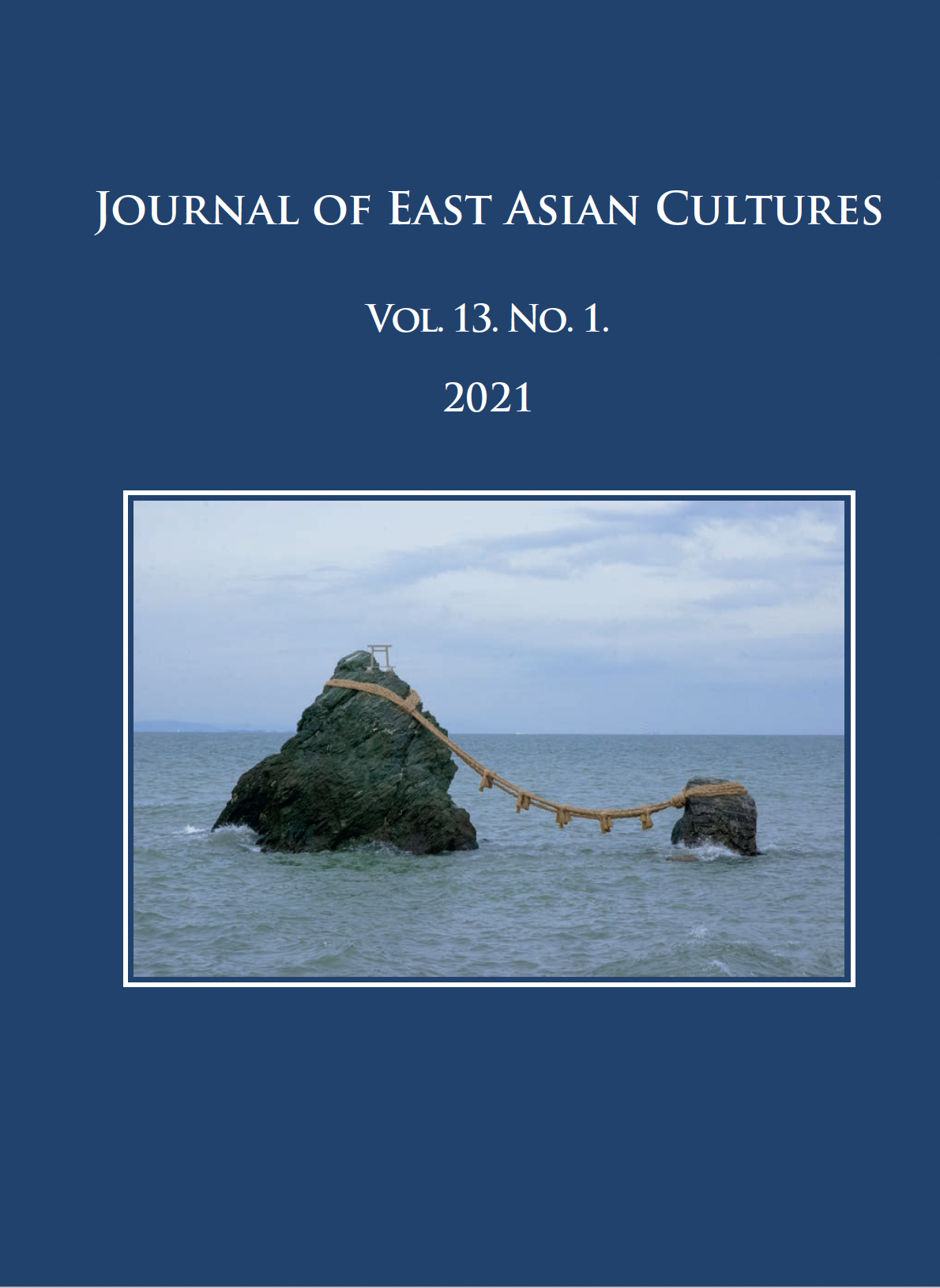Published 2021-12-15
Keywords
- Mongolian Buddhism,
- monastic ordination,
- monastic life,
- monkhood and family,
- different generations of monks
How to Cite
Copyright (c) 2021 the author(s)

This work is licensed under a Creative Commons Attribution-NonCommercial 4.0 International License.
Abstract
The 20th century brought different periods in the history of Mongolia including theocracy, socialism and democracy. This article describes what renouncing the world (especially the home and the family), taking ordination, and taking monastic vows meant at the turn of the 20th century and a century later. Extracts from interviews reveal the life of pre-novices, illustrating their family backgrounds, connections with family members after ordination, and support from and towards the family. The master-disciple relationship which was of great significance in Vajrayāna tradition, is also described. As few written sources are available to study monks’ family ties, the research was based on interviews recorded with old monks who lived in monasteries in their childhood (prior to 1937), monks who were ordained in 1990, and pre-novices of the current Tantric monastic school of Gandantegčenlin Monastery. The interviews revealed similarities and differences in monastic life in given periods due to historical reasons. Though Buddhism could not attain its previous, absolutely dominant role in Mongolia after the democratic changes, nowadays tradition and innovation exist in parallel.
References
- Abrahms-Kavunenko, Saskia 2018. “Mustering Fortune: Attraction and Multiplication in the Echoes of the Boom.” Ethnos, Journal of Anthropology 84.1: 1–19. https://doi.org/10.1080/00141844.2018.1511610
- Abrahms-Kavunenko, Saskia 2019. Enlightenment and the Gasping City. Mongolian Buddhism at a Time of Environmental Disarray. Ithaca and London: Cornell University Press. https://doi.org/10.7591/9781501737664
- Abrahms-Kavunenko, Saskia 2019. “Tenuous Blessings: The Materiality of Doubt in a Mongolian Buddhist Wealth Calling Ceremony.” Journal of Material Culture 25.5: 1–14. https://doi.org/10.1177/1359183519857042
- Birtalan, Ágnes (ed.) 2008. Hagyományos Mongol Műveltség I. A mongol nomádok anyagi műveltsége [Traditional Mongolian Culture, Part I. Material Culture]. Budapest: Eötvös Loránd Tudományegyetem, Belső-ázsiai Tanszék.
- Birtalan, Á. – Majer, Zs. – Szilágyi, Zs. – Teleki, K. (eds.) 2015. Buddhizmus a mai Mongóliában [Buddhism in Contemporary Mongolia]. Hagyományos Mongol Műveltség III. [Traditional Mongolian Culture III.] Budapest: Eötvös Loránd Tudományegyetem.
- Boldbātar, £. 2010. Mongolīn burxanī šašnī lam xuwrag [Mongolian Buddhist Monks]. Ulānbātar: Soyombo Printing.
- Forbáth, László 1934. A megujhodott Mongolia [The New Mongolia]. Budapest: Franklin (A Magyar Földrajzi Társaság Könyvtára [Library of the Hungarian Geographical Society]).
- Goldstein, Melvyn C. 2010. “Tibetan Buddhism and Mass Monasticism.” In: Adeline Herrou and Gisele Krauskopff (eds.) Des moines et des moniales dans le monde. La vie monastique dans le miroir de la parenté. Presses Universitaires de Toulouse le Mirail, 1−16. [English version of the French paper]
- Majer, Zs. – Teleki, K. 2019. Öndör nastan lam narīn yaria. ХХ jūnī exen üyeīn xürē xīdǖdīn talār awsan yarianūd II. (2006–2009). [Interviews with Old Mongolian Monks about Monasteries existing in the Early 20th century (2006–2009)]. Ulaanbaatar: Mongolian Academy of Sciences, Institute of History and Ethnology.
- Pozdneyev, Aleksei Matveevich 1978. Religion and Ritual in Society: Lamaist Buddhism in late 19th-century Mongolia. Ed. by J. R. Krueger. Bloomington: The Mongolia Society.
- Sūtra of Nanda’s Ordination (Tib. dga’ bo rab tu byung ba’i mdo). Degé Kangyur, 328, Vol. 72 (mdo sde, sa). 254b–257a. www.84000.co.
- Teleki, K. 2012. Monasteries and Temples of Bogdiin Khüree. Ulaanbaatar: Mongolian Academy of Sciences, Institute of History.
- Teleki, K. 2019. Öndör nastan lam narīn yaria. ХХ jūnī exen üyeīn xürē xīdǖdīn talār awsan yarianūd II. (2007–2017). [Interviews with Old Mongolian Monks about Monasteries existing in the Early 20th century (2007–2017)]. Ulaanbaatar: Mongolian Academy of Sciences, Institute of History and Ethnology.
- Ven. Čoiǰamc, Ūš, Ulānbātar, 18 September 2009.
- Ven. Dašdorǰ, Ceyenxǖ, Jǖn xürē Daščoilin xīd Monastery, Ulānbātar, 2 July 2010.
- Ven. Galsan, Gombo, Dambadarǰālin xīd Monastery, Ulānbātar, 7 July 2010.
- Ven. Ganjorig, Cedendamba – Lxagwadorǰ, Cewegsüren – Mönxbātar, Lxagwaǰancan –Mönx-Erdene, Mönxtüwšin, Gandantegčenlin Monastery, £üd dacan, Ulānbātar, February 2020.
- Ven. Gončig, Darǰā, Ulānbātar, 25 September 2009.
- Ven. Gončig, Sandag, Gandantegčenlin Monastery, Ulānbātar, 13 September 2009.
- Ven. Gončig, Sandag, Gandantegčenlin Monastery, Ulānbātar, 9 November 2010 (conducted in cooperation Claire A. Whitaker).
- Ven. Nandinbātar, Myagmar, Jǖn xürē Daščoilin xīd Monastery, Ulānbātar, 4 February 2020.
- Ven. Osor, Nyam, Šanxīn Barūn xürē, Xarxorin district, Öwörxangai province, 14 April 2010.
- Ven. Perenleiǰamc, Regden, Batcengel district, Arxangai province, 6 August 2010.
- Ven. Sodnomceren, Šülǰin, Ulānbātar, 12 May 2010.
- Ven. Tügǰ, Šiǰir, Lamrim dacan Monastery, Ulānbātar, 3 November 2010 (conducted in cooperation with Claire A. Whitaker).
- https://www.eap.bl.uk/project/EAP264/search (accessed: 10.03.2020).
- http://www.mongoliantemples.org (accessed: 10.03.2020).

